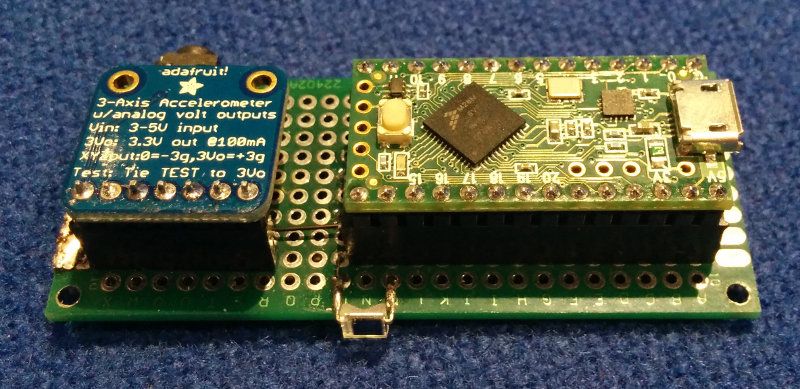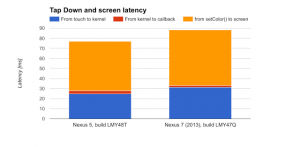We all like immediate gratification and most of us have noticed that things seem snappier in newer builds of Android. Some of us may have even wondered or asked openly how these faster responses were being developed. If you're one of those who wondered, you now have your answer. Recently Google developers posted a blog entry about how they are tackling these delays, called latency, through the use of a tool that is designed for folks to build on their own. And it's name? WALT.
Latency is something apparently Google has been spending a significant amount of time trying to address. Let's say you want to have the screen react to a touch. You would need to know how much time is taken from start to finish of the task. This is described as the round-trip latency. But if a person wants to break this down further like in the example shown in the graphic - there were no tools to really do so. WALT, which descended from another USB tool called QuickStep, allows to measure latency of audio I/O, drag, screen draws and/or taps. By synchronizing down to the millisecond an external hardware clock with the testing device, either Android or Chromebook, it's possible to now gather the separate input and output latencies. The result is now knowing the breakdown of each portion of the round-trip latency, allowing developers to look for opportunities to better tune and improve the results.
By releasing to the public Google hopes that this tool will be useful for others as they try to study and minimize the latency of their work on either platform. They have even included build instructions for those who would like to make the test device themselves. And the difficulty to make WALT? From Google software engineer Mark Koudritsky:
"WALT is simple. The parts cost less than $50 and with some basic hobby electronics skills, you can build it yourself."
Check out more by going to the WALT repository on Github, which includes a parts list, build instructions and steps on how to utilize the device.
So developers - is this something that you think you will use? Or do you believe there is a different approach that could be used? Feel free to continue the discussion by adding your comments below!


